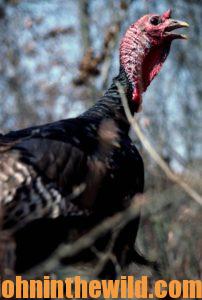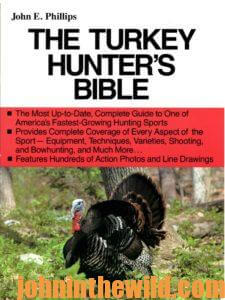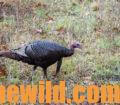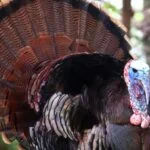Editor’s Note: Each turkey hunter has his or her own personality and preferences for how to hunt gobblers. Here’s a look at the various tools you need to take a tom.
* Trail Camera: One of the most-quiet, easiest ways to scout for the wiliest gobblers is to place trail cameras with motion sensor in a place where you expect turkeys to be. Not only can a motion-sensor camera photograph the turkey, but the camera also can tell you at what time the bird shows-up. If you find a strut zone, set-up your camera, and leave it for two or three days to have a record of what time the gobbler appears.
*  Decoys: When using a turkey decoy, face it in the opposite direction from which you expect the gobbler to come. When a tom comes in to a hen decoy, his first move will be to make eye contact. If the decoy is facing away from him, he probably will be willing to move in closer to the hen and the waiting bowhunter.
Decoys: When using a turkey decoy, face it in the opposite direction from which you expect the gobbler to come. When a tom comes in to a hen decoy, his first move will be to make eye contact. If the decoy is facing away from him, he probably will be willing to move in closer to the hen and the waiting bowhunter.
* Broadheads: Using stakes with decoys will give them lifelike motion. A decoy can be used to keep the turkey’s attention away from the bowhunter to give the bowhunter a chance for an undetected draw. Turkey hunters prefer broadheads that have three or four fixed razor-sharp blades that save meat on a bird and decrease tracking time and lost birds.
* Using Bug Juice: Good clothing and netting won’t always stop the hard-driving nose of a sharp-billed mosquito. The major consideration when buying insect repellent is to make sure that the repellent you use contains DEET. Concentrating on the turkey in front of you if mosquitoes are buzzing around your head, redbugs are burying into your hide, and ticks are crawling up your back is tough.
* Fanny Seat and Clearing Debris from Your Hunting Place: – Another mandatory piece of equipment is a turkey seat or a  waterproof cushion to make a long sit on the hard ground comfortable and increase the sportsman’s odds of bagging a bird. Some hunters like a web seat for extra comfort and fold-up legs with a strap for easy carrying from place to place. The hunter’s ability to sit still is directly related to his fanny’s ability to stay comfortable. Other than insects, fanny fatigue causes more hunters to fidget and move than any other factor.
waterproof cushion to make a long sit on the hard ground comfortable and increase the sportsman’s odds of bagging a bird. Some hunters like a web seat for extra comfort and fold-up legs with a strap for easy carrying from place to place. The hunter’s ability to sit still is directly related to his fanny’s ability to stay comfortable. Other than insects, fanny fatigue causes more hunters to fidget and move than any other factor.
But a cushion isn’t the only way to eliminate fanny fatigue. Before you sit down, be sure no rocks, limbs, sticks or stumps are on the ground. A turkey chaser can get so excited when he’s calling that he’ll sit down quickly beside a tree, before realizing he’s sitting on something that’s causing extreme discomfort. The hunter either has to endure the pain or move and risk spooking the bird.
To learn more about turkey hunting, check out John E. Phillips’s book, “The Turkey Hunter’s Bible,” at http://amzn.to/11up8wO, and available in Kindle, print and Audible versions.
Tomorrow: Dressing Turkey Hunters Properly to Bag More Birds
















